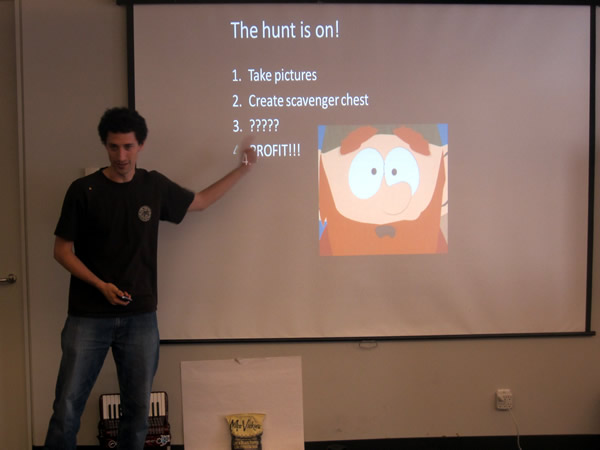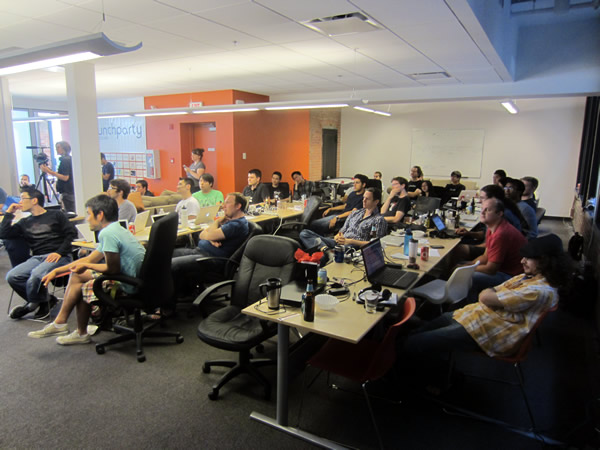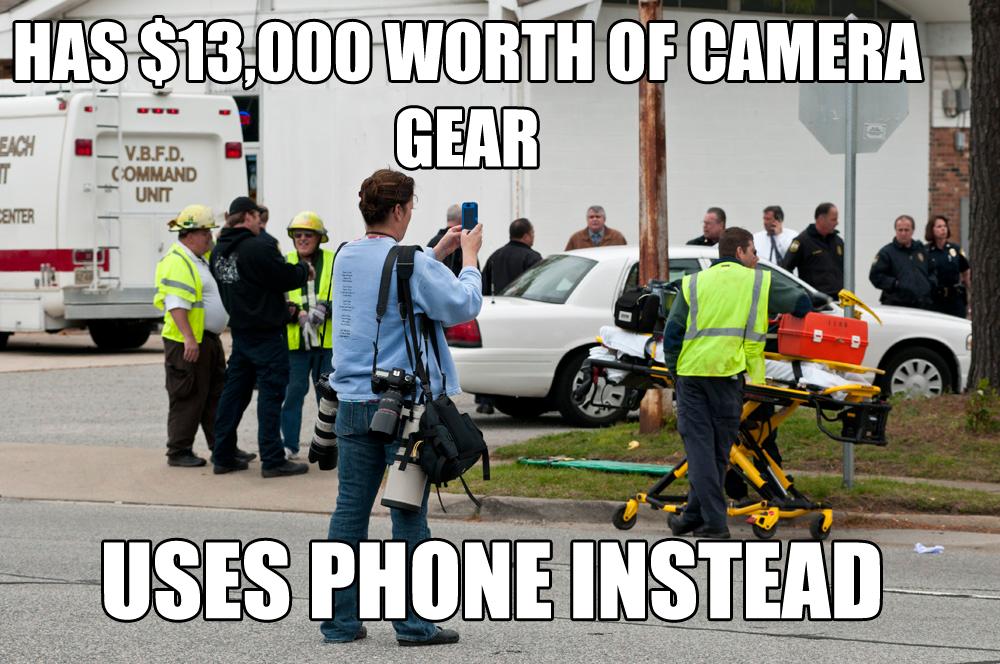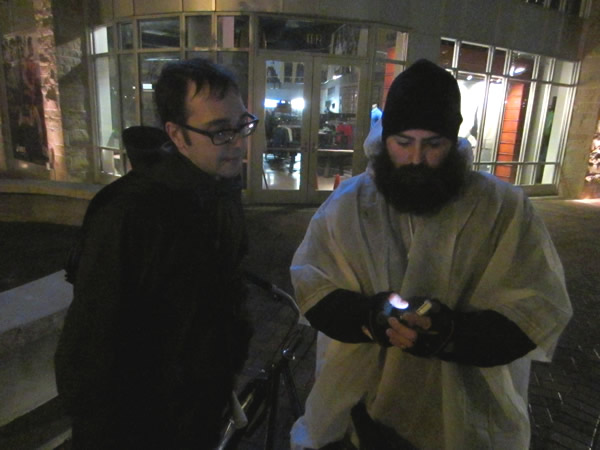
HackDays, the cross-Canada API hackathon, returns this Saturday, March 24th at the offices of A Thinking Ape and Shopify will be there. HackDays hackathons are all-day gatherings where developers of all manner of platforms and skill levels to take APIs from providers like Shopify and other sponsors like iQmetrix, YellowAPI, FreshBooks and TinEye and build some cool apps by using one or more of them. It’s a great way to put your coding and app design skills to the test, discover new APIs, meet other developers in your community and even win great prizes!

The “Scavenger Chest” app being presented at HackVan, August 2011.
At the start of the day, you’ll gather your team — you can either bring them with you or find people to work with there — and come up with an idea. Ideas must use at least one of the sponsored APIs, and we’d really love it if you used the Shopify API!
You’ll spend a handful of hours putting together the app…

Ducking out of the way of the projector while making a presentation at HackVan, August 2011.
…and at the end of the day, each team will present their apps. A panel of distinguished judges will review the presentations and pick the best apps to receive prizes.

The hackers watch the presentations at HackVan, August 2011.
If you’re looking for a fun, mentally challenging, rewarding and unusual Saturday in Vancouver, come to HackVan this Saturday!
The Details
The HackVan Main Event (Saturday, March 24th): Register here for $10.00 — the money shows you’re serious about attending, but it goes a long way. You’ll get breakfast, lunch, and a free invitation to the Friday pre-HackVan mixer!
The Friday pre-HackVan Mixer (Friday, March 23rd): Register here for $10.00 — if you can’t make it on Saturday or won’t be coding, come to the pre-HackVan mixer and meet and network with everyone!
This article also appears in the Shopify Technology Blog.








 There’ve been rumors about PayPal putting together some kind of competitor to Square for some time, so it wasn’t a complete surprise when they announced
There’ve been rumors about PayPal putting together some kind of competitor to Square for some time, so it wasn’t a complete surprise when they announced 

